Semolina pasta, the culinary wonder of Italy, has its origins in the art form of pasta making. Made from durum wheat semolina, a coarse grind gives it a firm texture and nutty flavor. The pasta production process involves grinding durum wheat into semolina flour, mixing it with water to form a stiff dough, kneading to develop gluten strands, extrusion through bronze dies, and drying at low temperatures to preserve its integrity and flavor

What is semolina flour?
Sesame flour is a type of coarse wheat flour commonly used in cooking and baking. It is made from durum wheat, a hard variety of wheat known for its high protein content and gluten strength. Here are some key points about semolina flour:
1. Structure and Appearance:
- Sesame flour has a gritty texture due to its coarseness.
- It is usually yellow in color.
2. Common Uses:
- Pasta: Semolina flour is the main ingredient for making homemade pasta. It gives the pasta a firm texture and helps it retain its shape during cooking.
- Bread and pizza dough: Sesame flour is added to some bread and pizza recipes to add texture and flavor.
- Desserts: Semolina is used in a variety of desserts, such as semolina pudding, cakes, and pastries.
3. Nutrient Profile:
- Sesame flour is a good source of protein, fiber, and some essential B vitamins.
- It is also rich in iron and magnesium.
4. Cooking Tips:
- When using semolina flour for pasta, mix it with water to form a dough. Mix it well and let it rest before rolling it out.
- Semolina can be used with other flours (such as all-purpose flour) for various recipes.
- Remember that semolina flour is not suitable for people with gluten sensitivity or celiac disease, as it contains gluten. Whether you want to
- Make fresh pasta or experiment with different recipes, semolina flour is a versatile and delicious option! 🍝
Semolina Pasta Recipe:
This is a simple recipe for homemade semolina pasta. Semolina flour and water are the only ingredients needed to make this classic Italian dough. It can be formed into ravioli, tagliatelle, or it, among other pasta shapes. The finest aspect? You don’t need any specialized tools, like a pasta maker.
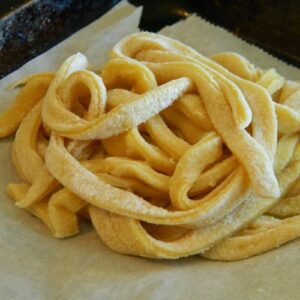
Semolina Pasta
Equipment
- Large mixing bowl
- Fork or fingertips for mixing
- Clean work surface for kneading
- Plastic wrap
- Pasta machine or rolling pin
- Knife or pasta cutter
Ingredients
- 2 cups semolina flour
- 2 large eggs
- 1 tablespoon olive oil optional
- ¼ to ½ cup water as needed
- Pinch of salt optional
Semolina Pasta recipe
- 8 ounces about 2 cups semolina flour
- 2 large eggs
- 1 tablespoon olive oil optional
- Water as needed
- Salt to taste
Notes
Instructions:
- Prepare the dough: In a large mixing bowl, make a well in the center of the semolina flour. Break the egg into the well. Add olive oil (if using) and a pinch of salt.
- Mix the ingredients: Using a fork or your fingers, whisk the egg and olive oil together while slowly incorporating the surrounding semolina flour.
- Form Dough: Continue mixing until a rough, shaggy dough forms. Knead the dough with your hands, gradually adding water as needed until the dough comes together.
- Knead the dough: Transfer the dough to a clean, lightly floured work surface. Knead the dough for 5-10 minutes until it becomes smooth, elastic and slightly sticky.
- Rest of the dough: Shape the dough into a ball and wrap it tightly in plastic wrap. Let the dough rest at room temperature for at least 30 minutes to 1 hour.
- Divide and roll: After resting, roll out the dough and divide it into small portions. Use a pasta machine or rolling pin to roll out each portion into thin sheets.
- Cut the pasta: Once rolled out, cut the pasta sheet into desired shapes, such as fettuccine, spaghetti or lasagna noodles.
- Cook the pasta: Cook freshly made semolina pasta in a large pot of boiling salted water for 2-5 minutes or until al dente.
- Serve: Drain the cooked pasta and toss with your favorite sauce or topping. Serve immediately and enjoy the homemade goodness of fresh semolina pasta!

Product of Italy (CH)
From Selected Italian Durum Wheat to Guarantee Firmness while Cooking
Made from Large Particle Size Grain to Preserve Wholeness of the Gluten
Kneaded with Cold Water to Assure a Sweeter Taste
Coarse Bronze Drawing to give Pasta the Ideal Roughness to adhere Perfectly to Sauces
Tips for semolina pasta:
1. Measure flour and water:
- Mistake: Using too much flour can result in dry, tough pasta.
- Solution: Stick to a two-to-one ratio of semolina flour to warm water. For a softer texture, consider swapping in half durum flour or even all-purpose flour.
2. Kneading the dough:
- Mistake: Inadequate mixing can result in an uneven dough.
- Solution: Knead the dough aggressively for about 10 minutes. Fold it over itself until it is vaguely ball-like.
3. Dough Composition:
- Mistake: Dough that is too dry or too wet can affect the final pasta.
- Solution: Aim for a dough that is firm but not dry. Adjust water or flour as needed.
4. Choosing the Right Lot:
- Mistake: Using the wrong type of flour can affect the texture.
- Solution: Choose semolina flour (look for labels like semolina,” “semolina,” or “rimanciata”). Brands like Caputo and De Cecco are great choices.
5. Hand-forming shapes:
- Mistake: Not shaping pasta correctly can affect cooking time and presentation.
- Solution: Explore shapes like conchiglie, strozzapretti, fusilli, and more. Use tools you already have, such as a fork or butter knife.
What is the difference between semolina flour and all-purpose flour?
The key differences between semolina flour and all-purpose flour are:
1. Ingredients and Type of Wheat:
o Sesame flour:
- Durum is made from wheat, which is a hard variety of wheat.
- Higher protein content compared to all-purpose flour.
- a coarse texture and a slightly nutty taste.
-
All-purpose flour:
- Made from soft wheat.
- Low protein content.
- Smooth texture and mild taste.
2. Common Uses:
-
Sesame flour:
- Ideal for making bread, pasta and other hearty baked goods.
- Gives firm texture to pasta.
-
All-purpose flour:
- It is versatile and suitable for a wide range of baked goods including cakes, muffins and cookies.
3. Nutrient Profile:
-
Sesame flour:
- High in protein, fiber and minerals like iron, zinc, potassium and phosphorus.
-
All-purpose flour:
- It is more commonly used but has a lower nutritional profile than semolina.
4. Cooking Tips:
-
Sesame flour:
- Great for homemade pasta.
- Use it for semolina porridge.
- Sprinkle it over fried or baked potatoes for extra crunch.
-
All-purpose flour:
- Suitable for a variety of baked goods.
- High protein and fiber content can help you feel fuller for longer.

The Marcato Atlas 150 Pasta Machine, made in Italy from chrome-plated steel, features three attachments for lasagna, fettuccine, tagliolini, spaghetti, lasagnette, and ravioli. It can be transformed into an electric pasta machine by using 9 other attachments or a Pasta Drive motor.

This 3-in-1 pasta attachment kit is a must-have accessory for KitchenAid Stand Mixers, except K45SS. It allows you to roll dough and cut pasta into spaghetti, fettuccine, and lasagna simultaneously, eliminating the need to change the pasta attachment. The kit features three sets of blades made of grade SUS304 stainless steel, including the Pasta Roller Spaghetti Cutter Fettuccine Cutter. The compact, 1.6KG structure is convenient for storage. The pasta maker is efficient and convenient, rolling 5.5-inch sheets of pasta with eight different thickness options. It is easy to use and clean, making it a great gift for those who have a KitchenAid Stand Mixer.
 The stainless steel spaghetti server set is a practical and easy-to-clean item suitable for outdoor activities. Its teethed head design allows for secure picking up of noodles and spaghetti, while its large size prevents burns. The set is made of durable stainless steel, making it rust-resistant and corrosion-proof. The smooth surface and stainless steel structure make it easy to maintain, saving time and energy.
The stainless steel spaghetti server set is a practical and easy-to-clean item suitable for outdoor activities. Its teethed head design allows for secure picking up of noodles and spaghetti, while its large size prevents burns. The set is made of durable stainless steel, making it rust-resistant and corrosion-proof. The smooth surface and stainless steel structure make it easy to maintain, saving time and energy.some other semolina pasta recipes :
1. Semolina pasta without eggs:
Ingredients:
- 2 cups (300 g) semolina rimassinata (finely ground semolina made from durum wheat)
- ⅔ cup (150ml) warm water (warm water makes the dough easier to knead)
Instructions:
1. Prepare the dough:
- Tip the semolina onto a clean work surface or into a large mixing bowl and make a well in the middle.
2. Add water:
- Pour hot water into the well.
- Using a fork, slowly mix semolina with water.
3. Knead the dough.
- Once a rough dough forms, use your hands to knead it until it becomes smooth and elastic.
4. Let it rest:
- Wrap the dough in plastic wrap (cling film) and let it rest for 30 minutes before shaping.
5. Shape your pasta:
- Follow the tutorial to make homemade Cavatelli Pasta or Gnocchetti Sardi (both easy shapes to make with this pasta dough).
Enjoy your freshly made semolina pasta! Serve it with your favorite sauce and savor the authentic Italian flavors. 🍝 For more detailed instructions and variations, you can find the original recipe here. very hungry
semolina pasta gluten-free recipe:
Using traditional semolina pasta, a gluten-free alternative can be achieved by incorporating alternative wheat flours, despite the challenges of recreating traditional pasta.
Ingredients:
- 1 cup brown rice flour
- 1/2 cup tapioca flour
- 1/2 cup potato starch
- 1/4 cup corn starch
- 1 teaspoon xanthan gum
- 1/2 teaspoon of salt
- 2 large eggs
- 2-4 tbsp. water, as needed
Vegan Semolina Pasta Recipe:
Ingredients:
- 2 cups semolina flour
- 3/4 cup water (adjust as needed)
- 1 tablespoon olive oil
- 1/2 teaspoon of salt
Instructions:
Mixing the dough:
- In a large mixing bowl, combine the semolina flour and salt.
- Make a well in the center of the flour mixture, and add the water and olive oil.
- Using a fork or your hands, gradually incorporate the flour into the wet ingredients until a dough forms.
Knead the dough.
- Transfer the dough to a clean, lightly floured surface.
- Knead the dough for about 5–10 minutes until it becomes smooth and elastic. If the dough is too dry, add a little more water, a tablespoon at a time. If it is too sticky, add some more semolina flour.
Resting the dough:
- Shape the dough into a ball and wrap it tightly in plastic wrap.
- Let the dough rest at room temperature for at least 30 minutes. This allows the gluten to relax, making the dough easier to work with and resulting in a better texture.
Rolling and cutting:
- After resting, open the dough and divide it into small portions for easy handling.
- Using a pasta machine or rolling pin, roll each piece of dough into a thin sheet. Dust with semolina flour as needed to prevent sticking.
- Cut the rolled-out dough into desired shapes, such as spaghetti or ravioli.
To cook the pasta:
- Bring a large pot of salted water to a boil.
- Carefully add the pasta to the boiling water and cook according to package instructions, usually about 2–5 minutes for fresh pasta.
- Stir gently to prevent sticking, and cook until the pasta is al dente (soft to the bite but still firm).
Serving:
- Once cooked, drain the pasta and toss it with your favorite vegetarian sauce, such as marinara, pesto, or vegan Alfredo sauce.
- Garnish with fresh herbs, a drizzle of olive oil, or vegan cheese, if desired.
- Enjoy your homemade vegan semolina pasta as a delicious and satisfying meal!
This recipe can be customized by adding herbs, spices or nutritional yeast for extra flavor. You can also experiment with different shapes and sizes of pasta to suit your preferences.
Semolina pasta nutrition:
Semolina pasta is made from semolina flour, which is obtained from durum wheat. It has many nutritional benefits like being an excellent source of fiber, protein, complex carbohydrates and other vitamins and minerals. The nutritional breakdown of semolina pasta is as follows:
1. Carbohydrates: Soji pasta is mainly composed of carbohydrates, which serve as the body’s main source of energy. The complex carbohydrates in semolina pasta digest slowly, providing a sustained energy release and helping to regulate blood sugar levels.
2. Protein: Durum wheat, the main ingredient in semolina flour, contains a relatively high amount of protein compared to other types of wheat flour. As a result, semolina pasta has a moderate amount of protein, making it a valuable component of vegetarian and vegan diets.
3. Fiber: Semolina pasta contains dietary fiber, which is important for digestive health. Fiber helps promote regular bowel movements, prevent constipation, and support a healthy gut microbiome. However, compared to whole wheat pasta, semolina pasta may contain slightly less fiber because it is made from the endosperm of the wheat grain rather than the whole grain.
4. Vitamins: Semolina pasta provides a variety of vitamins, including B vitamins such as niacin (vitamin B3) and folate (vitamin B9). These vitamins play essential roles in energy metabolism, nervous system function and cell division.
5. Minerals: Semolina pasta is a good source of minerals like iron, magnesium and phosphorus. Iron is important for oxygen transport in the blood and energy production, while magnesium and phosphorus are essential for bone health, muscle function and overall cellular function.
6. Low in fat and sodium: Semolina pasta is naturally low in fat and sodium, making it a healthier alternative to many processed foods. However, the nutritional content can vary depending on how the pasta is prepared and what ingredients are added.
7. Gluten: It is important to note that semolina pasta contains gluten, which is found in wheat, barley and rye. Therefore, unless certified gluten-free semolina flour is used, it is not suitable for individuals with gluten sensitivity or celiac disease.
some Semolina pasta sauces:
1.Marinara Sauce:
2 tablespoons of olive oil
3 cloves garlic, minced
1 can (28 oz) crushed tomatoes
1 teaspoon dried oregano
1 teaspoon dried basil
Salt and pepper to taste
Red pepper flakes (optional)
Instructions: In a saucepan, heat the olive oil over medium heat. Add minced garlic and cook until fragrant, about 1 minute. Stir in the crushed tomatoes, oregano, basil, salt, pepper and red pepper flakes (if using). Simmer for 20–30 minutes, stirring occasionally, until the sauce thickens.
2.Alfredo Sauce:
1/4 cup vegan butter or olive oil
3 cloves garlic, minced
2 cups unsweetened almond milk or other non-dairy milk
1/4 cup nutritional yeast
2 tbsp all purpose flour
Salt and pepper to taste
fresh parsley, chopped (for garnish)
Instructions: In a saucepan, melt the vegan butter over medium heat. Add minced garlic and saute for 1-2 minutes. Whisk in the almond milk, nutritional yeast and flour until smooth. Cook, stirring constantly, until sauce thickens, about 5-7 minutes. Season with salt and pepper. Serve over cooked pasta and garnish with fresh parsley.
3.Pesto Sauce:
2 cups fresh basil leaves
1/2 cup pine nuts or walnuts
2 cloves garlic
1/2 cup olive oil
1/2 cup nutritional yeast (optional, for a cheesy flavor)
Salt and pepper to taste
Instructions: In a food processor, combine the basil leaves, pine nuts, garlic, and nutritional yeast (if using). Pulse until finely chopped. With the motor running, slowly drizzle in the olive oil until the mixture forms a smooth paste. Season with salt and pepper, to taste. Toss with cooked pasta and serve.
4.Arrabbiata Sauce:
- 2 tablespoons of olive oil
- 3 cloves garlic, minced
- 1 can (14 oz) diced tomatoes
- 1 teaspoon dried oregano
- 1 teaspoon dried basil
- 1/2 teaspoon crushed red pepper flakes (to taste)
- Salt and pepper to taste
- fresh parsley, chopped (for garnish)
Instructions: In a saucepan, heat the olive oil over medium heat. Add minced garlic and saute till golden brown for about 1-2 minutes. Stir in diced tomatoes, oregano, basil, red pepper flakes, salt and pepper. Simmer for 15–20 minutes, stirring occasionally. Serve over cooked pasta and garnish with fresh parsley.
some healthy pasta toppings:
1. Broccoli:
- Broccoli is rich in fiber, vitamin C, vitamin K, potassium and manganese.
- Boil some florets with your pasta and combine them with other toppings such as olive oil, garlic or parmesan cheese.
2. Mushrooms:
- Mushrooms add a creamy texture and are a good source of vitamin D.
- Experiment with varieties such as portobello, cremini, shiitake or white mushrooms with goat cheese, spinach or fresh lemon juice.
3. Green Peas:
- Sweet and colorful green peas provide plant-based protein, vitamin A, vitamin K, and manganese.
- Pair them with mint, garlic, cheese, basil or red pepper flakes.
4. Parents:
- Raw spinach is rich in fiber, vitamin C, iron and calcium.
- Mix it into tomato sauce, add it to pasta salad or brighten cream-based sauces.
5. Tomatoes:
- low in calories and high in fiber, vitamin C, and potassium.
- Make your own homemade tomato sauce using fresh tomatoes or top your pasta with cherry tomatoes, cheese, peppers and olive oil.
6. Asparagus:
- full of fiber, vitamin K, folate, vitamin C, and vitamin A.
- Healthy toppings that complement pasta dishes.
Conclusion
Semolina pasta offers a simple yet delicious culinary experience, combining nutritional benefits and a subtle nutty flavor, making it a favorite staple in the world of pasta dishes.
FAQ
1. What is the difference between semolina pasta and regular pasta?
- Semolina pasta is made from durum wheat, which is high in protein and gluten, which gives it a firm texture and holds its shape well when cooked. Regular pasta can be made from different types of wheat and can have different textures depending on the type of wheat used. Semolina pasta is chewier and has a slightly nuttier flavor compared to regular pasta
2. Is semolina pasta healthier?
- Semolina pasta is not necessarily healthier than regular pasta. Both types of pasta provide carbohydrates and some protein, but the healthiness depends on the portion size and what you pair with it. However, semolina pasta may provide slightly more protein and fiber than regular pasta due to its durum wheat base.
3. Can I eat semolina pasta daily?
- You can eat semolina pasta daily as part of a balanced diet, but portion sizes and overall dietary variety must be considered to ensure you’re meeting your nutritional needs.
4. What is the difference between semolina flour and all-purpose flour?
- Sesame flour is coarser and higher in protein than all-purpose flour. It is usually made from durum wheat and is yellow in color. Sesame flour is commonly used to make pasta and some baked goods, while all-purpose flour is more versatile and suitable for a variety of cooking and baking purposes.

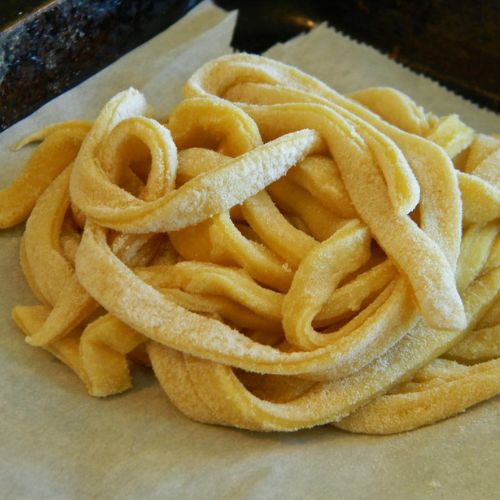



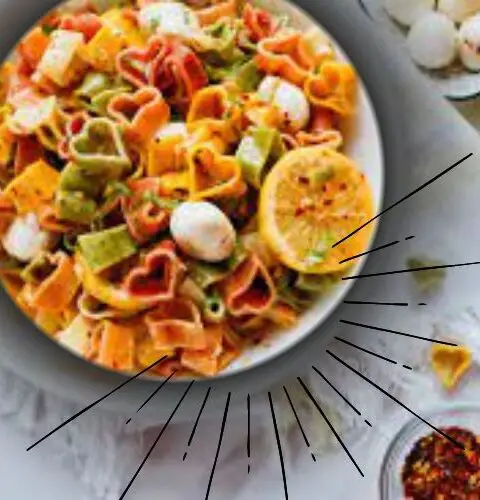
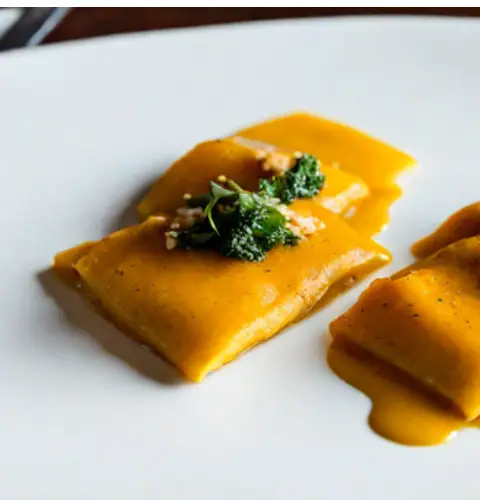

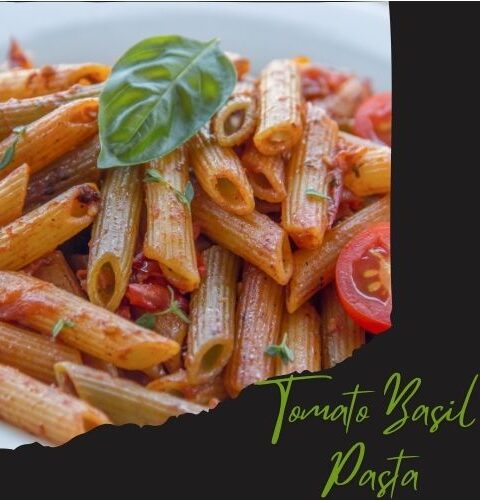
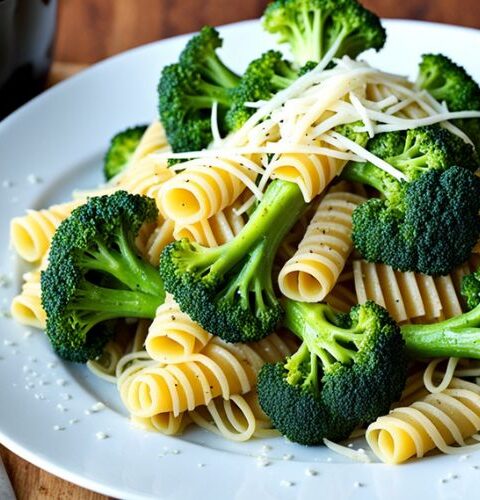
You’re welcome! Thank you for your understanding. If you have any specific questions, topics, or areas of interest you’d like to explore, feel free to share them. Whether it’s about technology trends, scientific discoveries, literary analysis, or any other subject, I’m here to provide information and assistance. Just let me know how I can assist you further, and I’ll be happy to help!